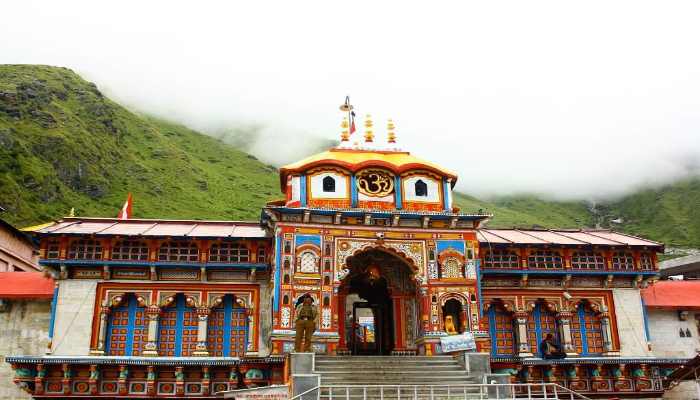Badrinath Dham: Open and Close Date with a glimpse into its history
Category : Latest News |
![]() Posted on 01 March 2024
Posted on 01 March 2024

Nestled in the majestic Himalayas, Badrinath Dham stands as a beacon of spirituality, drawing pilgrims from far and wide. This year it is set to open on 12th May 2024 at 06:00 AM. The closing date is not yet decided, but tentatively, the gates are set to close on 06th November 2024.
Let us embark on a journey to explore the religious, cultural, and historical significance of this revered shrine.
Religious and Cultural Significance
Badrinath Dham holds immense religious significance for Hindus. It is one of the Char Dham pilgrimage sites, believed to be essential for achieving salvation. Dedicated to Lord Vishnu, the preserver of the universe, the shrine is believed to be the abode of the deity in his form as Badrinarayan.
The cultural fabric of Badrinath is woven with devotion and tradition. Pilgrims undertake arduous journeys to seek the blessings of the deity and immerse themselves in the spiritual aura of the place. The rituals and ceremonies performed at the temple reflect centuries-old customs and practices, adding to the cultural richness of the region.
Festivals Associated with the Deity
Throughout the year, Badrinath Dham reverberates with the sounds of devotional hymns and chants, especially during festivals. The most significant festival celebrated here is the Badri-Kedar Festival, which honors both Badrinath and Kedarnath, another important pilgrimage site. During this festival, the temple comes alive with vibrant processions, elaborate rituals, and cultural performances, offering a glimpse into the fervent devotion of the pilgrims.
Geography of Badrinath
Situated in the Chamoli district of Uttarakhand, Badrinath Dham is surrounded by breathtaking natural beauty. The temple is perched at an altitude of 3,133 meters (10,279 feet) above sea level, amidst snow-capped peaks and lush greenery. The tranquil setting of Badrinath, with the Alaknanda River flowing nearby, adds to its allure and spiritual ambiance.
Temple Architecture
The architecture of the Badrinath temple is a marvel in itself. Built in the traditional Garhwali style, the temple features a conical-shaped roof, intricately carved pillars, and a vibrant facade adorned with sculptures of gods and goddesses. The sanctum sanctorum houses the idol of Lord Badrinath, sculpted in black stone, exuding an aura of divine grace and serenity.
Mythology of Badrinath
According to Hindu mythology, Badrinath Dham holds significant mythological associations. It is believed that Lord Vishnu meditated at this sacred spot for thousands of years, in the form of Badrinarayan, to bless humanity and uphold righteousness. The area is also mentioned in various ancient texts and epics, further enhancing its mythological importance.
Why You Should Visit
A visit to Badrinath Dham is not just a journey of physical travel but also a spiritual odyssey. The serene surroundings, the resonating chants, and the aura of divinity create an atmosphere conducive to introspection and inner peace. Whether you seek spiritual enlightenment, cultural immersion, or simply a retreat into the embrace of nature, Badrinath offers an experience that is both profound and unforgettable.
In conclusion, Badrinath Dham stands as a testament to the enduring faith and devotion of millions of pilgrims who undertake the sacred journey to this revered shrine. With its rich religious heritage, cultural vibrancy, and breathtaking beauty, Badrinath continues to inspire and uplift souls, making it a must-visit destination for seekers of truth and spirituality.


